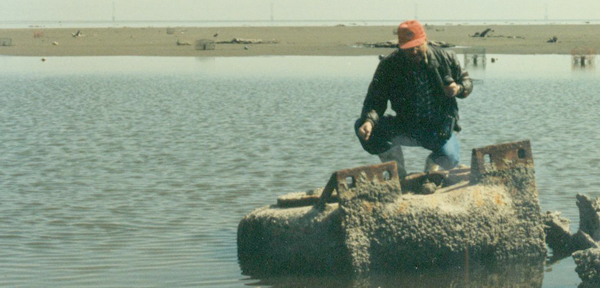
Over the past 50 years, Milton Cambre has taken a keen interest in the LaBranche Wetlands.
The 78-year-old Norco resident is the chairman of the Coastal Zone Advisory Committee and has been attempting to save marshes in the LaBranche Wetlands that he has seen disappear over the years. Open water in the area has increased from 300 acres to over 4,200 acres as higher salinity water has continued to creep in from Lake Pontchartrain and destroy local marshes.
The St. James Parish native has lived on water his entire life.
“I was born on the Mississippi River and I was always in tune to the river and how it has played into important aspects of the culture,” he said. “I was a modern Huckleberry Finn. That was my playground in the 40s. It was critical when I was growing up. You know, we didn’t have television back in those days.”
After relocating to Norco and spending years exploring the East Bank where it connects to Lake Pontchartrain, Cambre came across his first discovery of what he found later to be a lost village when he noticed part of a structure sticking out of the water.
“Years ago when the shoreline was eroding I came across a brick pillar and it piqued my interest,” he said.
Cambre began to ask around about the area and was able, through the help of oral histories, piece the together the story of a St. Charles Parish community named LaBranche that was lost nearly a century ago.
The community is thought to have been located adjacent to the site of Wetland Watchers Park, located at 1650 Lower Guide Levee Road in Norco, and just north of the Old Hammond Highway, which has been inundated with water since at least the 1930s.
The brick pillar he saw was theorized to be a remnant from the community and more specifically a part of a well known and important structure.
“It was the old section house. They kept people there who were traveling to Manchac and from Manchac to Kenner,” he said.
According to Cambre, the community was only a brief part of the parish’s history, springing up in the early 1900s before being lost to Lake Pontchartrain in a catastrophic Category 4 hurricane over a decade later.
“The hurricane of 1915 wiped it out. I understand 35 to 38 people died. It wiped out all of that,” he said.
Cambre compares LaBranche to the community of Frenier, which was located further to the northwest along the lake in St. John the Baptist Parish and where the remnants of structures destroyed in the hurricane can be seen.
“The Frenier cemetery is still intact, but all of the people of that community were wiped out,” he said.
As Cambre was told by others who passed down their knowledge of the community by word of mouth, LaBranche was created after being reclaimed from the wetlands with the help of a pump that drained the area in the early 1900s.
“I’ve never seen it in the history books. It was just something that was passed onto me and I haven’t been able to research it,” he said. “It was along the railroad track to the bayou that they kept it pumped out. They grew vegetables in the area and sold them in New Orleans.”
In 1996 Cambre made another discovery to back up this belief. An early 1900s era pump was uncovered during a period of very low water in the area.
Cambre believes that after the community was inundated with water, others in the area unsuccessfully tried to reclaim the pump.
“They probably tried to salvage it in the lake and something happened to the boat and it got stuck there,” he said.
Cambre originally intended to expand a rock berm around the pump to try and preserve it, but it was lost again as waters rose and he has not seen it since.
Now, nearly a century after the community was lost and nearly 20 years after he last saw evidence of its existence, Cambre recently came across a brick walkway during another low water period.
“All of the sudden the tide went out and uncovered it. It has probably been out there under debris for a long time. I went with my pirogue and I saw the bricks and I said ‘oh my goodness!’” he said. “It is interesting that in all of those years I’ve been going back there I haven’t seen it.”
The walkway is composed of 1840s-era Laurel bricks, which Cambre said were fired in Laurel, Miss. and most likely transported to the parish by train.
“Usually what you find around here are St. Joe bricks. So you can tell these ones are bit older,” he said.
His goal now is to reclaim the six foot by 12 foot walkway from the lake.
“I’d like to protect and preserve it and make it at least visible for the Wetland Watchers Park,” he said. “Some of the bricks I am going to put on display in the Wetland Watchers Park to give some history on it.”
More than that, Cambre said he would like to try and keep a similar fate from afflicting other parts of the parish that due to the loss of marshland are becoming more susceptible to storm surges.
“The saltwater is killing the cypress and vegetation and the marsh is dying off. If we don’t save it, it will be all open water,” he said. “It is destroying the habitat. As the coast is moving in more to us, then we are more vulnerable to the storms.”




Be the first to comment